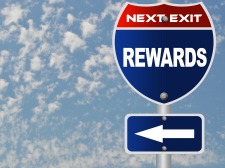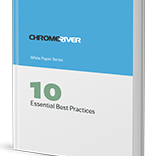 These days, loyalty programs are everywhere, whether you’re using an online shopping membership like Amazon Prime for shipping, swiping a credit card to earn cash back, or scanning a quick-response code for a discount at your neighborhood coffee shop.
These days, loyalty programs are everywhere, whether you’re using an online shopping membership like Amazon Prime for shipping, swiping a credit card to earn cash back, or scanning a quick-response code for a discount at your neighborhood coffee shop.
With travel expense management, business travelers often invest a little extra time to take advantage of deals and rewards offered by airlines, hotels and car rental companies. But changes to these long-running programs can turn hard-earned loyalty into disaffection.
Here are a few changes to loyalty programs that tend to irritate frequent travelers, according to USA Today.
- Reducing upgrades. Many people join a membership program in order to get freebies like upgraded airline seats or hotel rooms. While these upgrades are a bonus, customers may still feel outrage when they “earn” fewer upgrades.
- Adding fees for incidentals. Airlines have faced plenty of criticism in recent years for adding checked baggage fees, eliminating free meals, and charging for seat assignments. While some travelers may appreciate the savings they gain from these a la carte models, others feel nickel-and-dimed when they are charged for basic services.
- Trimming amenities and perks. According to USA Today, some hotels that used to deliver newspapers to rooms now only make them available in lobbies and lounges. While it’s true that fewer people read a physical newspaper today, cutting back on a traditional service might seem cheap to some travelers.
- Making rewards more difficult to redeem. Rewards programs can make policy changes that lower the value of airline miles, for example. And with rewards that expire at the end of the year, travelers may find it harder to take advantage of free flights and stays.
The impact of these changes depends on what each traveler perceives as most valuable. While loyalty programs are designed to keep people from simply chasing the lowest price from company to company, a sufficiently irritated customer may take the time and the initial hit to switch providers.
Organizations, on the other hand, need more data-driven means to determine when it’s time to seek out a different preferred vendor. Using automated travel expense management software like Chrome River EXPENSE can provide better expense data to managers, helping them to identify categories where optimizing the vendor relationship offers the greatest potential returns.
What does your organization look for in rewards programs? How do you determine when it’s time to switch? Share your thoughts in the comments section!
Source: USA Today, September 2013
Subscribe
Latest Posts
Posts by Category
I just love the Chrome River application. I could probably sell it! Finance Administrative Coordinator Law Firm, 800 Employees
Can’t we just move year-end, so that we can roll out Chrome River sooner!? Financial Systems Director Law Firm, 300 Employees


Comments